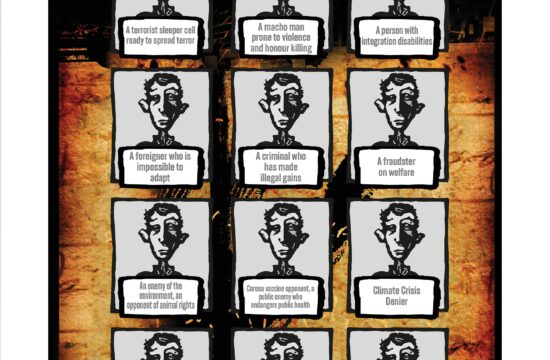Bishal Khanal
Former Secretary National Human Rights Commission of Nepal, Currently Faculty Member, Kathmandu University School of Law – NEPAL
Child Right: A Perspective
The UN Convention on the Rights of the Child (CRC) call for ensuring right to life, right to survival and right to development for all the children .The children deserve the right to participation in cultural and artistic life as well among various rights that are obliquely spelled out in the convention. At times they are rephrased into three rights like protection, provision and participation . The CRC prohibits use of children in unlawful sexual activities and sexual exploitation such as prostitution, pornography and other sex related practices . The CEDAW provides that the child marriage is unlawful so it must be prohibited, and all marriages should be registered.
In the spirit of CRC sexual orientation of children seems to be exploitative whether occurred with child marriage or otherwise. Child marriage is a threat to safe motherhood and healthy development of male children. It is against the right to sexuality and reproductive rights of women . Child marriage ignores the right to participate in decisions affecting children. Child marriage would grossly impair the right to development of children that may include right to participate in, right to contribute to and right to enjoy fruits of overall development endeavors . The Declaration on the Rights of the Child gives great emphasis to the healthy development of children, family size, child spacing, breast feeding and safe motherhood . And therefore child marriage impairs the human rights of children as enshrined in CRC and other international human rights instruments.
Child Marriage:
Myth and Realities
Over the millennia child marriage has been common in South Asia. The early scriptures assigned father to choose a bride or groom for the marriage of his daughter and son. The classical literatures that were recognized as rules encouraged parents to marry their children at young age. To avoid mythical penalty of sin and irreverence father was bound to perform his daughter’s marriage before her first menstruation, bosom-up and other bodily signs of maturity . Traditionally, sight of daughter during menstruation period before her marriage was considered sinful or unholy If such incident, daughter had to stay with relative’s family for a week, to avoid the situation.
The age of puberty was the borderline in defining child and adult. The girl aged 12 and boy aged 16 were considered attaining maturity for engaging into sexual orientation . But marriage of girl below six was punishable with confiscation of parent’s property . Many girls were married as early as eight years of age as per prevailing rules and to defy social affront. Since sense of sexuality was absent with new couple, as per consent of parents bride would stay at parental home until her 11-12 years in some families. Until six decades ago, if girl stayed unmarried until 16 year or above that would go against prevailing social norm thus a matter of social affront. There was an age in which some parents and particularly pregnant mothers would agree to get marriage of their incoming babies if born with different sexes.
Children were deliberately denied sexual education as it was considered an issue of strict seclusion and culturally, socially and religiously immoral. It was denied mainly with fear of learning about illicit sexual behavior with inapt girl and boys. It was evident in a caste based society with lots of social and cultural inequity. It was such a conservative society where opposite sex children were denied friendship. After sexual intercourse legal relation of those two would automatically convert into spouses. Women having sexual intercourse with very last man would automatically be her legal husband in a polygamous society.
The Code of 1854 encouraged to follow earlier practices. In February 1938 the Code was extensively amended and that set ten years of age for marriage . The Code of 1962 set 14year for girl and 16 year for boy to marry with their consent. In terms of marriage arranged by parent or guardian marriageable age was set 16 and 18 years for girl and boy respectively . Since 2017 marriageable is made for 20 years for both girl and boy in order to comply with the right to equality (equal age) of the constitution. However historically, culturally and religiously embedded concept and practice of child marriage still largely exists. The South Asians introduced child marriage to prevent children from harmful, immoral and corrupt sexual behaviors among children. Additionally it was considered fair to control excessive sexual desire during puberty ages. The Islamic and some African societies on the other hand devised the idea of male and female circumcision/genital mutilation to suppress excessive sexual desires during puberty period along with child marriage. In order of development they are considered harmful traditional practices. Efforts are now underway from both national and international levels to eliminate those practices. The age for marriage in early China was classified based on different periods. By 680 B.C. male at 20 and girl at 15 were allowed to marry. The Wei and Jin dynasties lost huge population in war so promoted early marriage to increase population. It is therefore law allowed marriage at the age of 15 and 13 to boy and girls respectively. During Song to Chin dynasties marriage was allowed at the age of 16 and 14 for boy and girls respectively. The life expectancy was about 35 year so people used to marry early to have children who replace them.
Perils- All-around
Every child shall have the right to education, healthcare, maintenance, proper care, sports, entertainment and overall personality development. Child marriage is the bane for children’s prosperity and therefore punishable. And therefore persons insisting, supporting and engaging for child marriage would also be liable for punishment.
Children are physically, mentally, emotionally, and psychologically, unfit for married life . A report entitled ending child, early and enforced marriage in Nepal reads that ‚early marriage is a violation of human rights‘.
The child marriage has several human rights implications and multiple adversities on overall wellbeing of children. It keeps them away from education and better livelihood skills. It may invite the risk of violence, abuse, ill health, or early death. The implications fall on the reproductive rights of women, safe motherhood, survival and development of newborn, labor and work related rights among others. Child marriage is considered worst form of gender based violence.
The girls are found married in early ages than boys. The child marriage is now common among vulnerable population largely living in interior parts of the country. The vulnerable communities such as Dalit and indigenous communities largely follow this practice. Apart of culture and tradition, poverty is the main cause of early marriage of girl child. In dalit and indigenous community groom’s family is supposed to offer dowry/grant as demanded by bride and her parents. The early marriage of girl therefore has threefold immediate benefit to parents. One is to acquire dowry amount and the other is to be free from liability for subsistence, education, healthcare etc after marriage. The third is to upholding their tradition in which bridegroom is liable to offer required labor and social support to father in law’s family such as plough/farming, raring cattle, construction work etc. Indeed amount of dowry would provide economic support to the family for certain period.
As mentioned child marriage has deep cultural, religious and social roots. The idea has been placed in the heart and mind of people since time immemorial. It was set as a family obligation to uphold prestige of the kin. The earlier law virtually allowed child marriage with a view to have many children in the family. A women married in tender age was expected to give birth many children. Person having many children had larger influence and respect in the society.
Despite many efforts to end the practice, still child marriage has been widely prevalent. In an average child marriage constitute 46.2 percentages among marriages. Out of it 53 percentages are female and 33.8 are males. The family pressure, children’s own desire and need of family work support are main reasons behind child marriage. Likewise social media mainly via mobile phone helped children to communicate and build consent to marry each other. Though child marriage is illegal and immoral but in certain communities love marriage helped to prevent dowry payment for daughter’s marriage. Additionally education, culture, traditional practices, poverty and food security too are the causes of child marriage in present times.
The implication of child marriage is indeed serious. Study shows that out of all maternal death 41 percentages are from among married in child age. The survived young mothers complain of physical weakness, pain and multiple illnesses. Out of all drop outs 67 percent are from among married in child age. Among them 33 percent are boys and 67 percent the girls.
Girls Not Brides- a global partnership to end child marriage report tells that ‚child bride’s future is stolen by the adult‘ concerned. The Human Rights Watch in its report entitled ‚our time to sing and play: child marriage in Nepal‘ has several findings. The report provides that 37% of girls are married before the legally recognized age. It identifies driving forces for child marriage, its impact on girls and the structural barriers to change as well. Report identifies that child marriage is deeply harmful to the girls.
After marriage girls usually drop out of schools and give early birth risking health of child and mother. Child marriage keeps girls and their families in a cycle of poverty. Married girls are more likely to be victim of domestic violence. Education remains a distant dream for married girls. Families are reluctant to invest in their education giving reason that schools are located away, they are expensive and brides are expected to involve in house hold chores. At times youngster choose marriage by loving each other. Some girls elope before they were pressurized for marriage by parents and kin. Some poor girls look for a husband who could provide her subsistence. Parents also seek out young, diligent and healthy bride who can properly discharge domestic chores.
Even worse is the practice of giving away underage girls for marriage with old and rich males particularly in some Islamic and impoverished communities. This happens in some other Asian and African countries as well. The main reason is the economic constraints of girl’s family. Indeed religious belief, societal attitude and cultural perception towards women too plays key role to adopt this misconception. The practice has created immense suffering to women for over the periods. The early age marriage leave women vulnerable which results in maternal mortality rate, unsafe childhood, unplanned child spacing followed by serious physical and mental threat to women.
The child marriage is given relatively limited attention and space in human rights perspective. The child marriage would harshly goes against the doctrine of ‚best interest of the child‘ devised in the CRC. Many states and communities views child marriage in criminal law perspective alike rape, sexual abuses and so on. That is not a complete approach as it ignores the human rights concerns . The issue therefore requires strong human rights focus as well.
Mitigation Efforts
The consequence of WW-II changed socio-economic and political dynamics of various countries. The new world order advanced on the foundation of freedoms, human rights and justice. The advancement of human rights values and standards along with formation of the United Nations called upon ending harmful traditional practices that were revolving against freedom, justice and emerging concept of development. As one of the harmful traditional practices child marriage was an impending reform agenda for many states. In this pretext the Nepali National Code of 1962 criminalized child marriage or marriage of female below 14 and male below 16 years respectively . The consequent amendments of the Code increased minimum age limit for marriage firstly to 16 and 18 years and later 18 and 20 years for female and male respectively.
In order to respect and protect the rights of the child various legal reforms made for the mitigation and abolition of child marriage. The law enforcement agencies, human rights defenders, civil society, academia, child clubs, religious and community groups such as mother’s group and others were encouraged to launch campaign and advocate against child marriage as a mitigation strategy. Albeit prevalence of child marriage still gives gloomy picture of the country. Over the years various initiatives taken such as awareness, campaigning, educational programs and legal sanction or punishment but the progress appears dismal. The effort needs serious consideration to abolish this menace forever.
Chief Strategic
Interventions
As a party to CRC, CEDAW, ICCPR and other major international human rights and humanitarian law related treaties Nepal has an obligation to look into this issue as well. Ratification to those conventions would create obligation to abide by them during policy/law making and its enforcement processes. In addition to right to protection and promotion, the respect and fulfillment of rights of the child is also a state obligation. Abolition of child marriage in the country is therefore a state obligation. Nepali government reiterated its promise to abolish child marriage, and major strategies advanced to this end are as below.
1. Legal Reform– in all earlier marriage law reform initiatives, efforts were made discourage child marriage. The National Code of 1962 and its consequent amendments increased the age to marry for both girl and boys . The Code criminalized the child marriage by making liable for fine and imprisonment to those who assisted and involved in performing child marriage. The National Criminal Procedure Code of 2017 that replaced the Code of 1962 provided much stern punishments to accessories of child marriage. In the spirit of CRC the Children Act defined child a human person below eighteen years of age . Nevertheless in terms of marriage the National Civil Code of 2017 allowed marriage between persons above twenty years only . The Supreme Court long ago directed the government to make law allowing same sex marriage with a view to respect rights of LGBTQ people.
The National Women Commission is mandated to work for legal and policy reform for the respect and promote women’s rights. Its mandate covers developing planning and strategy to mitigating social ills against women, and implements them wherever possible . The commission is responsible to work for the elimination of female child labor and ensure the right to education, right to healthcare and so on for female. The Ministry of Women, Children and Social Welfare has also a mandate to work on this agenda. The Children Act has envisioned the idea of juvenile justice. Juvenile courts/ benches are established across the country to look into the issues of juvenile delinquency, and voluntary child marriage may fall in this category.
2. Education and awareness– The effect and impact of child marriage have been introduced in the senior school curriculum. The state agencies such as National Human Rights Commission, National Women’s Commission, Child Welfare Council, National Children’s Organization followed by non state actors such as political parties, Bar, civil society, NGO, religious groups, mother’s groups, human rights defenders and social reformers frequently involve in dialogue, advocacy, lobbying, campaigning, sensitizing, counseling, publication and dissemination programs both jointly or separately. The government agencies including Ministry of Women and Children and Nepal Police among others launch various programs against child marriage.
3. Structural set up– At the governmental level different structures are set up under the administrative agencies such as department of women and social welfare, district administration, judiciary and Nepal police. The units and cells are established at different levels from center to the field. Those agencies involve discouraging and penalizing the menace of child marriage.
4. Partnership and collaboration– partnership and collaboration between the governmental, intergovernmental and nongovernmental agencies have been an effective strategy to address the problem. Their collaboration with national and international actors including in Girl is not Bride program has identified the causes and effect of child marriage. Those initiatives suggests to addressing the issue with strategies along with action plans. The human rights agencies both governmental and non-governmental have undertaken partnership strategies and launch dialogue and advocacy with the local stakeholders including the schools and child clubs. At times campaigning and sensitizing programs have been launched in different locations. The results are realized but not statistically measured.
Conclusion
The abolition of child marriage is a common agenda of the world. As in many other countries child marriage is legally prohibited in Nepal too. In spite of child marriage being prohibited by law the practice is very different. In rural Nepal child marriage is still common. A number of school going children as below as 12 or 14 are found eloping to become a couple. Many parents in rural Nepal have still a hangover of the past and therefore intend early marriage of their children. Out of thirty to forty percent of present marriages one of the couples is below 20 year of age. A World Vision International report shows that Nepal is one of the countries having very high incidence of child marriage.
Child marriage is a socially challenging issue in Nepal and therefore a punishable offence. Efforts have been made to mitigate the problem though they do not seem sufficient. As mentioned in the report social action groups should form and work across the country to minimize it. The youth empowerment programs on sexual education, early pregnancy, and safer sex practices in the schools and community learning programs may be useful. In addition consolidated efforts of like minded agencies from center to local/household levels are desirable. Programs like girls not bride for awareness raising initiative could be useful to this end. The 78.3% of male and 69.3 female married child say role of parents is crucial to mitigate child marriage.The Nepali administration appears committed to end child marriage. The government has also committed to ending child marriage by 2030 as a component of the sustainable development goals. The Government has been working with United Nations and other international development partners with Girls Not Brides Nepal strategy along with other related initiatives to end child marriage. The initiatives are in the implementation processes. Priority should be given for the implementation of sustainable development goals target. The national strategy has to develop and implement national plan of action to end child marriage. The plan should involve major actors of the state including governments, civil society, community leaders, Dalit and indigenous people’s rights groups, faith-based leaders and young people. It should assign clear responsibility to all concerned government institutions. Adequate resources should be allocated to ensure time-bound and measurable progress.











